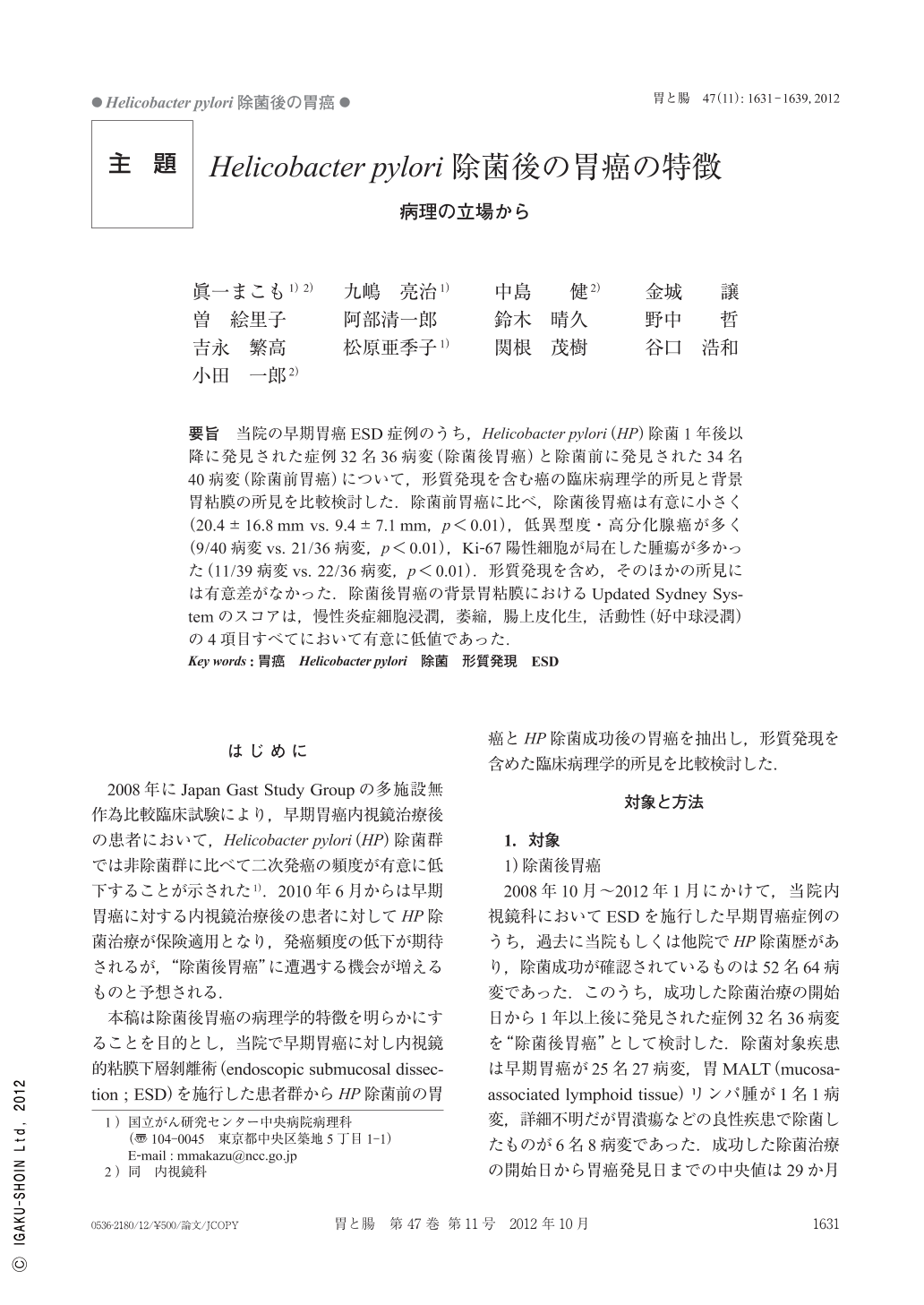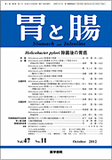Japanese
English
- 有料閲覧
- Abstract 文献概要
- 1ページ目 Look Inside
- 参考文献 Reference
- サイト内被引用 Cited by
要旨 当院の早期胃癌ESD症例のうち,Helicobacter pylori(HP)除菌1年後以降に発見された症例32名36病変(除菌後胃癌)と除菌前に発見された34名40病変(除菌前胃癌)について,形質発現を含む癌の臨床病理学的所見と背景胃粘膜の所見を比較検討した.除菌前胃癌に比べ,除菌後胃癌は有意に小さく(20.4±16.8mm vs. 9.4±7.1mm,p<0.01),低異型度・高分化腺癌が多く(9/40病変vs. 21/36病変,p<0.01),Ki-67陽性細胞が局在した腫瘍が多かった(11/39病変vs. 22/36病変,p<0.01).形質発現を含め,そのほかの所見には有意差がなかった.除菌後胃癌の背景胃粘膜におけるUpdated Sydney Systemのスコアは,慢性炎症細胞浸潤,萎縮,腸上皮化生,活動性(好中球浸潤)の4項目すべてにおいて有意に低値であった.
We compared clinicopathological findings including phenotypic expression between 40 early gastric cancers found before the eradication of Helicobacter pylori(HP)(pre-eradication group)and 36 early gastric cancers found more than one year after the eradication of HP(post-eradication group). Mean tumor size of the post-eradication group was significantly smaller than that of pre-eradication group(20.4±16.8 mm vs. 9.4±7.1 mm, p<0.01). The proportions of low grade lesions(9/40 vs. 21/36, p<0.01)and Ki-67 localized lesions(11/39 vs. 22/36, p<0.01)were significantly higher in the post-eradication group. No other significant differences were demonstrated. The Updated Sydney System scores for chronic inflammation, atrophy, intestinal metaplasia, and activity were significantly lower in the mucosa around post-eradication tumors.

Copyright © 2012, Igaku-Shoin Ltd. All rights reserved.


